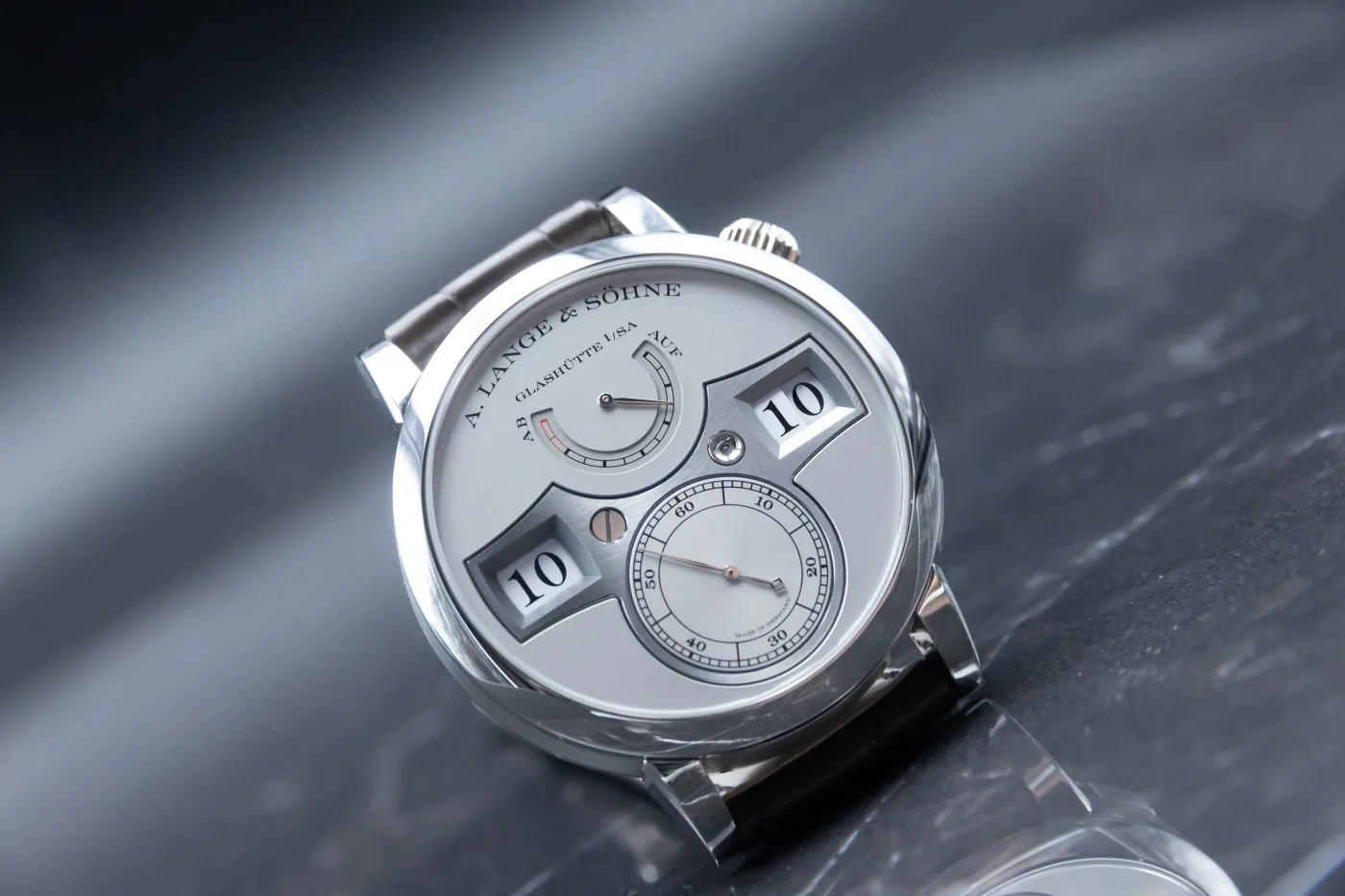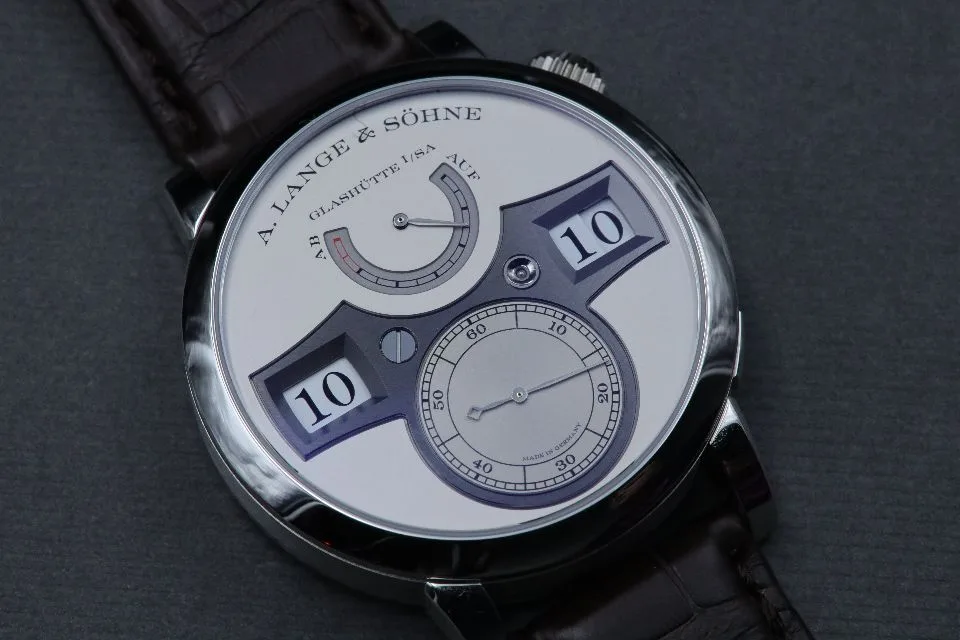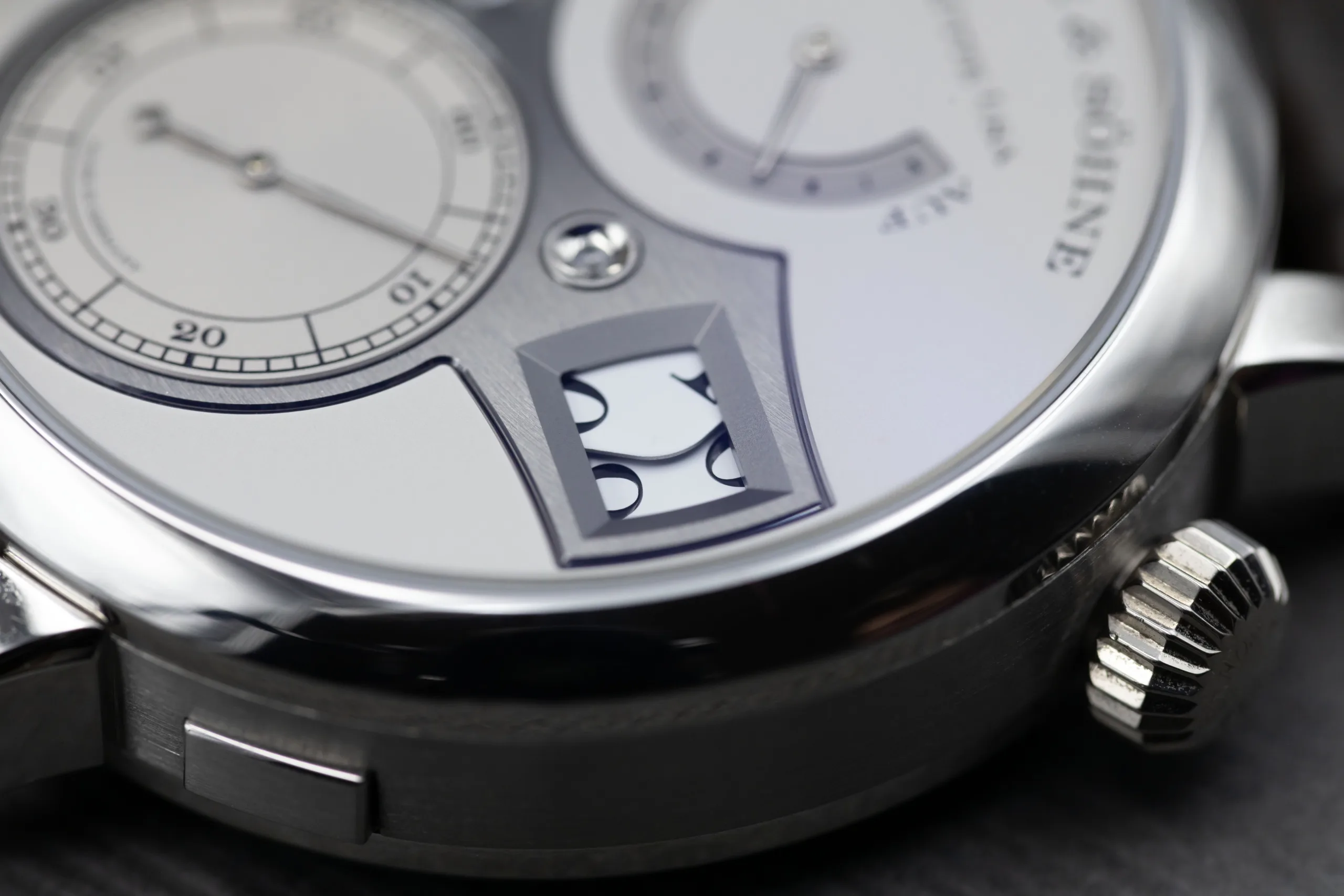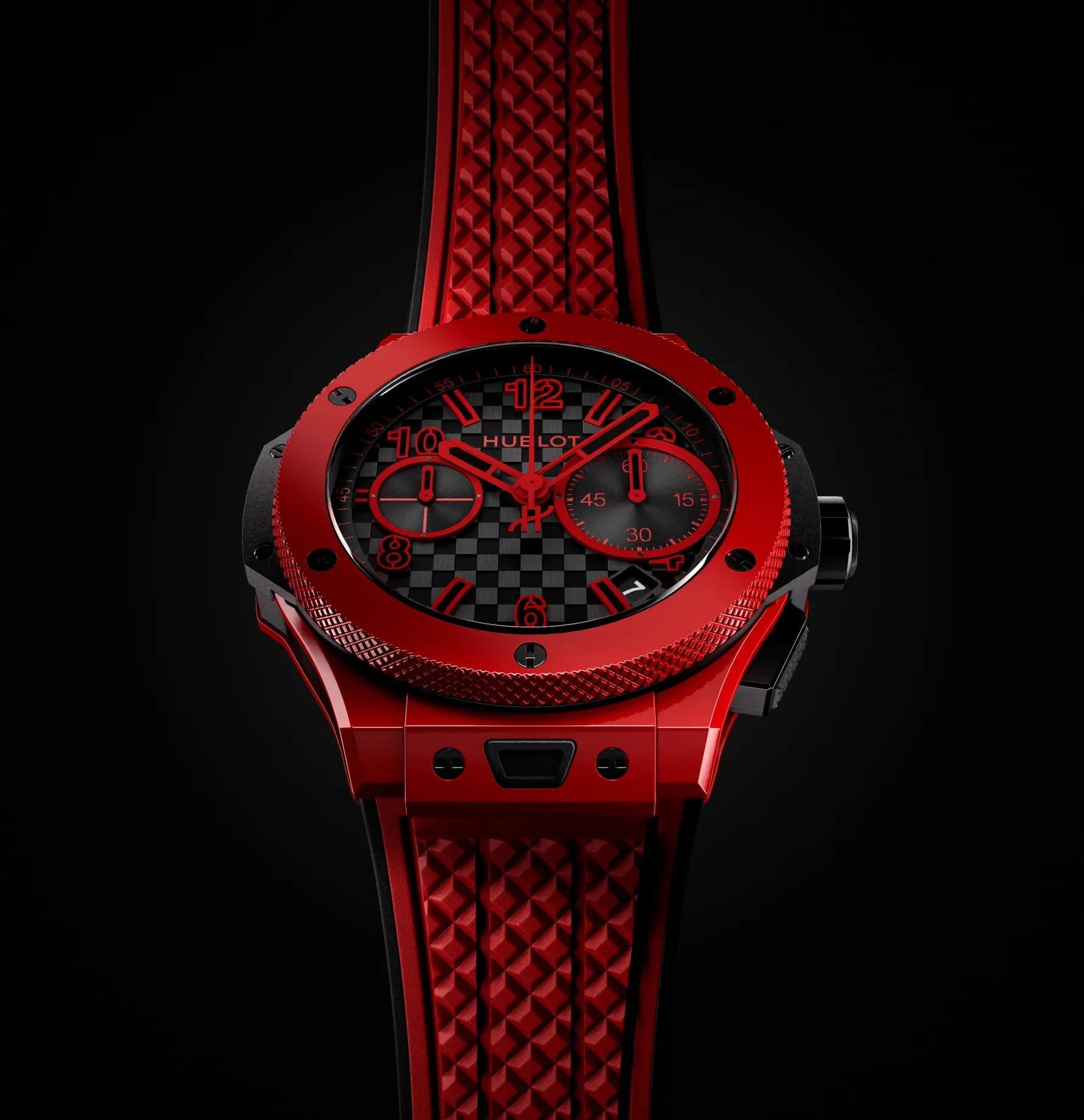BY HARLAN CHAPMAN-GREEN
A. Lange & Söhne’s Zeitwerk is a bold statement in the world of haute horlogerie. Renowned for its innovative digital display and masterful engineering, the Zeitwerk is a prime example of the brand’s unwavering commitment to craftsmanship and original design. It combines traditional watchmaking techniques with modern design elements, resulting in a timepiece that is both functional and aesthetically striking, although more complicated models do actually strike the time for you.
The Zeitwerk debuted in 2009 with its innovative design (courtesy of Nils Bode), winning the Aiguille d’Or, the grand prize, of that year’s GPHG awards. The first-generation Zeitwerk lasted until 2022, when it was overhauled and given the second-generation movement, which had been in use in the Zeitwerk Date since 2019. This one, which is still in production, is the most basic of the Zeitwerk range, but it’s very far from being a basic mechanical watch.
From the front of the watch, it appears that nothing changed between generations, which is how I like it. The Zeitwerk is an icon of the watch industry today, the disks being used to tell the hours and minutes are an ingenious idea to this day and serve a practical function: they’re legible af. The ‘Time Bridge’, as A. Lange & Söhne calls it, is where the main information can be found. The time, displayed through the windows, and the running seconds hand are linked by this rhodium-plated German Silver piece for this platinum version.
The ‘time bridge’ of the Zeitwerk made in 18k rose gold has a matching gold time bridge to contrast the black dial. The power reserve indicator is located at the top of the dial and is easily readable; I like that they’ve used ‘AB’ and ‘AUF, meaning off and on, respectively, in place of numbers. By the way, if you want to know quickly whether you’re looking at this newer one or the older one, look at the ‘Made in Germany’ text. On the newer models it’s printed on the seconds subdial, but on the older ones it’s engraved below the seconds subdial.
Hopefully, you’ve caught on to the idea A. Lange & Söhne were going after with the Zeitwerk: a watch that shows the time like a digital watch does while being purely mechanical. In the current age mechanical watches don’t serve the same essential function they did 70 years ago. Electronics are far more accurate and more reliable than mechanics, meaning that watchmakers now need to make their pieces into luxuries that people buy because they have the money to.
Of course, higher-end luxury watches have existed for as long as mechanical watches have, but the focus on luxury keyword today is magnified. To survive today, watchmakers must remember that their watches will often be bought on a whim, or because they look nice, or because the boutique staff were nice. The essential function of accurate time-telling remains, but there’s much more creative freedom now. The Zeitwerk, I think, bridges between the functional displays of quartz-driven LCD display watches and the mechanical watches of the past effectively and it’s thanks to the time display.
A. Lange & Söhne are not new to using windows to provide information. Their iconic ‘Outsize Date’, inspired by the clock in Dresden’s Semperoper (opera house), has been on the Lange 1 model since the brand’s revival in 1994 and stands out because of its easy legibility, its appearance and the tactile feel of the pusher that controls it. The Zeitwerk follows this principle but, as I said above, uses the windows to display the time rather than the date. On the left side of the ‘time bridge’ is the hours display, and on the right is the minutes display, which consists of two overlapping disks to show the minutes and tens of minutes.
To show the time in this manner a lot of thinking had to go into how to make it work using only spring power. Although they can make a watch run for a long time and power a lot of functions, it’s important to remember that the springs in wristwatches are small and where traditional hands are light, windows are not. A date window, for example, needs time to build power before it clicks forward. On some watches, you can see them do this in the evening. Where the date disk seems to “slip” at around 10 PM onwards, the watch is building power to make the change. Higher-end watches may not have the apparent “slip”, with their date changing instantly, but they do still need to build power to move the date wheel forward.
The Zeitwerk doesn’t actually build up power before flicking the displays over, as we’ll see in a moment, but you can imagine the task of managing power like that to move a heavy disk forward once a minute, and then every ten minutes you need to advance two disks forward, and then at every hour you need to advance three disks forward. You also need all these windows to flick over instantaneously and precisely when the seconds hand reaches zero, and you’ve also got to be able to set it forwards or backwards without damaging anything so the wearer can set the time quickly. It sounds like a lot of work, and that’s why the calibre L043.6 has over 450 components in it. 451, to be exact.
To make all of this work, A. Lange & Söhne use what they call a constant-force escapement, and we last saw this device in the review of their Lange 31 piece. In that watch, the escapement is there to moderate the extreme power the massive mainspring delivers to ensure accuracy across the 31 days of the watch’s power reserve. In the Zeitwerk models, the constant-force escapement is configured slightly differently. Every 60 seconds it briefly releases and re-tensions. In the released state the full power of the mainspring is released, and the quick burst of power moves the time displays forward. It means the displays move forward with no slippage and you don’t need to think about the time when you adjust it, unlike a date window where you can damage a watch by adjusting the time as it builds to the date change at midnight.
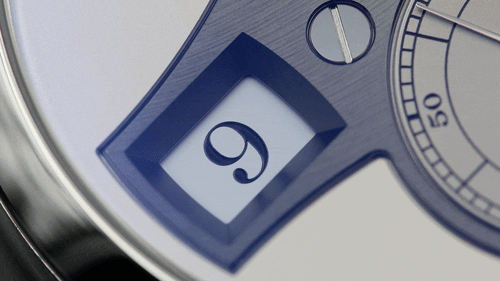

I’m not new to the Zeitwerk and I still find the time display’s sequence fascinating. The fact that it flicks over nearly always perfectly with a slight blur of the numbers as they change is very pleasing to watch. It’s also satisfying to listen to; you can audibly hear the windows as they advance, it’s not disturbingly loud, but it’s enough to notice that it’s happened and smile about it.
The watch got stuck flicking to a new hour once which induced a mild panic when I came to it in the morning, but it fixed itself after a little while. I guess that’s a quirk of this time display, can any Zeitwerk owners confirm in the comments section if they’ve had similar encounters? Also, the pusher that changes the hours forward on my watch was stuck in the ‘pushed in’ position. It’s entirely possible it’s been damaged in transit, or by the last reviewer, but I couldn’t use that feature for this review.
All of the time changing occurs on display through the sapphire crystal caseback. The constant-force escapement is visible through the caseback next to the balance wheel, although most of it is buried deep within the watch. It was quite tricky to focus the camera on, but you can see its blued remontoir spring buried back there, and the single-toothed escape wheels are a bit closer to the surface to see. If you need to determine this new calibre from the old one at a glance, look at the bridge for the constant-force escapement.
On the old one it’s shaped like a boat anchor, but it was revised for the calibre L043.6 seen here. Also, the mainspring barrel looks slightly different on this new one. As for the watch’s performance, it beats at 2.5Hz for a grand total of around 72 hours. But you don’t care about that, not when there’s all that beautiful hand finishing to admire.
Indeed, there’s definitely a special quality to A. Lange & Söhne’s watches with their German Silver plates and hand-engraved balance cocks.
The gorgeously finished movement is sat within a 950 platinum case measuring precisely 41.9mm x 12.2mm. It’s presented on an alligator leather strap with a 950 platinum pin buckle to match the case. Despite platinum being heavy the watch is effortlessly wearable. It’s got that distinctive heft that I appreciate from A. Lange & Söhne’s watches, it gives you confidence that you’re strapping on a piece of precision German engineering. At 152 grams on our VSS (Very Scientific (Kitchen) Scales) it’s slightly lighter than A. Lange & Söhne’s Odysseus in stainless steel and slightly heavier than Zenith’s divisive stainless steel Chronomaster Sport EP watch.
Overall, what we have here is a timeless classic of the modern era. Sure, other popular watches of today have been around longer and yet the Zeitwerk gets mentioned in the same breath. Cultivating a watch of that status takes ingenious engineering and timeless design which the Zeitwerk delivers in spades. I like this platinum version, too; with its lighter-coloured dial, it works, although I understand that the black dial with the silvery ‘time bridge’ is probably more iconic. There isn’t really a bad choice to be made here.
Sadly, A. Lange & Söhne doesn’t reveal its pricing any more, so you’ll need to speak to them directly. I would expect this variant to be at least $120,000, with the gold version being a little less than that.

